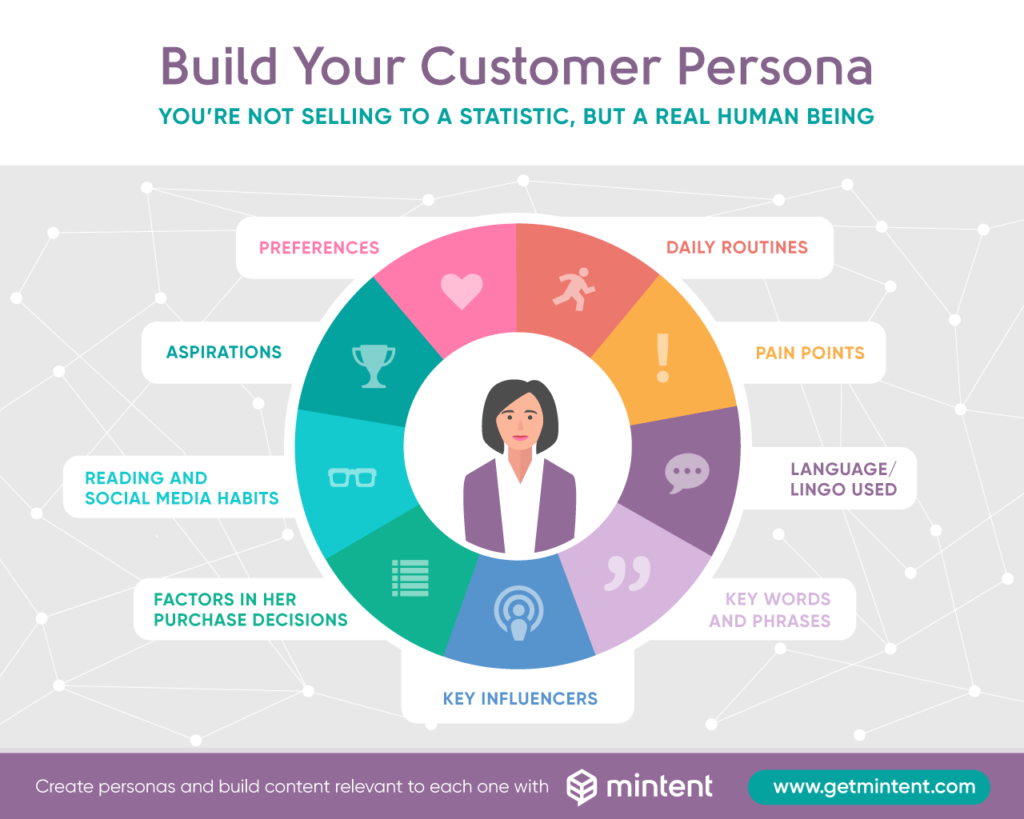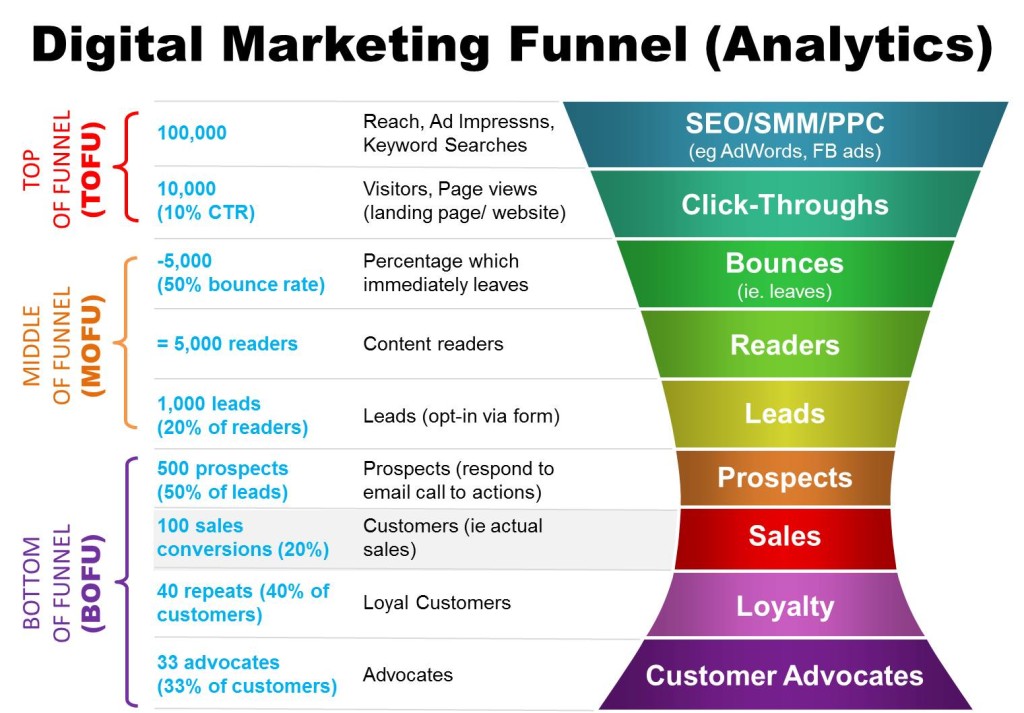
Social media is certainly the place to be. Especially if you’re a marketer trying to reach your customers.
From Facebook, Instagram, Twitter, and LinkedIn to YouTube, Pinterest and other social channels, billions of folks around the globe are on a social network every single second.
They are watching videos, sharing links, posting updates, chatting with each other, posting photos, and interacting with each other on virtually every topic under the Sun.
While there are uncountable “fishes” in the social sea, diving in without a social media marketing plan can be suicidal.
You’ll not only face tonnes of competition in the crowded online ocean; you’ll need to make your content and campaigns attractive and relevant to trigger the right actions from your audience.
What can you do to build your brand and attract customers on social media?
Begin by crafting a social media marketing strategy. Follow my 8 foundational steps to pave the way to greater marketing success on social media.
#1 Develop a Customer Avatar
First and perhaps most importantly, you need to know who you’re serving. This is where creating a detailed customer profile or avatar (think James Cameron’s blockbuster film) comes in.
In crafting your customer persona, consider the following factors:
- Demographics: What are their ages, gender/s, household types, income, education, locations, occupations, and other demographics factors like?
- Psychographics: What are their interests, attitudes, and beliefs like? Are they more introverted or extroverted? What brands would attract them?
- Online Behaviours: What do they do online? Are they gamers, active content producers, or mostly stalkers? Do they follow any influencers? Which channels do they frequent – Facebook, LinkedIn, Instagram, YouTube or Pinterest?
- Purchase Patterns: Are buying decisions made individually or in a group? What is the process like (B2B purchases are normally more complex than B2C ones)?
- Pain/ Pleasure Points: For your product category, what are the pain points or specific problems which it addresses? Or maybe your product goal is to help them achieve greater pleasure or realise their dreams. If so, write these down.
Your key goal in fleshing out your customer profile is to zoom in on the following:
- Search keywords
- Social media topics
- Brand affiliations
- Communities of interest
- Influencers
Here’s one way to visualise your customer persona (you can find more in my article here.)

Courtesy of mintent
#2 Conduct a Social Media Audit
Before you embark on any social media campaign, you need to know how your online environment is like.
There are several things you need to do here, both qualitative and quantitative:
- Perform an objective assessment of the current state of your social media presence. Evaluate which pieces of content worked better than others, and assess the performance of your prior campaigns.
- Monitor your competitors’ processes and performance in social media marketing. Look for possible gaps which they may have, as well as areas of strength that you can emulate.
- Do a social media Strengths, Weaknesses, Opportunities and Threats (SWOT) analysis.
(Read my article on the best free tools to strengthen your social media audit efforts.)
#3 Establish Social Media Marketing Goals
After understanding your broad landscape, it is time to determine your goals.
Here it is useful to consider your customer journey and digital marketing funnel (see below), and trace your customer’s buying journey.

In social media marketing, there are five main objectives which you’ll want to consider:
- Increase brand awareness: This is normally measured in terms of reach, impressions, views, fan/follower count
- Improve engagement: Also known as the consideration phase, your goal here is to increase likes, comments, and shares per post, grow the clicks per post, as well as increase overall engagement
- Sharpen conversion: Typically, conversions on social media may include event sign-ups, opt-ins, subscriptions, app downloads and sometimes purchases.
- Deepen loyalty: Customer loyalty on social media can be measured by fan growth, positive comments, positive reviews (eg 4 or 5 star reviews), and repeat purchase value.
- Improve advocacy: This is measured by the number of shares, retweets, third party blog posts (usually by influencers), and hashtagged posts.
#4 Choose the Right Channels and Content Types

After you’ve decided on what you hope to achieve, you need to choose the best channels and content types for the job.
Different social media platforms have different strengths. Here are some pointers you need to consider for each:
- Facebook is still the largest and most important social network out there. Due to its recent changes to the News Feed, conversation triggering content may work better here. Avoid click baiting or engagement baiting tactics. Videos are still cool here, and if you can, try to go Live.
- Instagram has grow tremendously in the last few years, and is now an important visual social channel to reach PMETs, young adults and youths. A key development here is the introduction of Stories, which are real-time video and photo updates. Content which works well here are photos and short videos.
- SnapChat was the original “Stories” app until it got supplanted by Instagram (and now Facebook too) with their own versions.
- LinkedIn is the most important social network for professionals, especially those in the management and technology fields. It is also well regarded by CEOs and senior managers. Text seems to be better here, especially those with a business storytelling angle.
- Twitter is still around. It recently allowed more characters (up to 280 characters) and its “What’s Trending” feature is useful to ascertain what’s hot. Like Instagram, #hashtags are important here. Tweets with images and short videos work well here.
- YouTube has morphed from being a social network to becoming an online video repository of sorts. It is also the second largest search engine on the Web, and hence the use of well-written descriptions and keywords become key.
- Pinterest is also known as “social candy” in view of its preference for beautiful designs and images. Over 2/3rds of Pinterest regulars are females. Increasingly, Pinterest has also become an important e-commerce channel.
Google Plus is still around. Although it is increasingly overtaken by spammers, there are still active communities around. Google Plus works well for image-led content.
#5 Craft Social Media Content

Developing content which resonates with your audience is both an art and a science.
Each content format has its own unique qualities:
- Blogs are not dead, and are very much alive. However, due to the lower visibility of link posts on Facebook, social media is becoming less important in driving blog traffic. Fortunately, SEO still works here (read my article on fleshing out SEO-friendly content here.)
- Short text posts are the main way to get a piece of content noticed on social media. This can range from super short single sentences to paragraphs that run to 100 to 200 words. While brevity is usually an advantage, telling good stories may be more important here. (PS – LinkedIn loves text.)
- Images like photos, cartoons and designed visuals are necessary across most social channels. With consumers increasingly viewing content on smartphones, your picture does paint a thousand words.
- Videos have grown in significance in the last few years, and will probably be the dominant media type in the years ahead. If budget is a constraint, aim for short everyday videos that you can shoot with your smartphone.
- Infographics deserve a separate mention here. Although they may not be as “viral” as videos, they tend to have a longer shelf-life if they tackle evergreen topics. Remember to pin your infographic on Pinterest.
When crafting content on social media, you need to consider two important points:
- Utility: Add value to your community and offer them tips, tactics, and templates that can help them to do better in life or at work.
- Storytelling: The best forms of content are stories. On social media, telling stories is a little different from doing a stand-up piece on stage. Read this article to learn more.
(To learn the nuances on crafting social media content, consider signing up for my course here.)
#6 Trigger Conversion

While going viral is a good outcome on Facebook, Twitter or LinkedIn, it does nothing for your brand if you cannot convert audiences to become your customers.
Here, I’d like to introduce the trinity of conversion type content for virtually all digital campaigns:
- Advertisements: As social network owners look towards raising their revenue, social media ads on Facebook, LinkedIn, Instagram and other channels will grow in importance.
- Promotions and Offers: From contests to discounts to free eBooks, offering an incentive helps you to drive action on social media.
- Landing Pages: These are the custom designed pages where specific opt-in actions are required from visitors. Read my article to learn how you can optimize yours today.
#7 Measure Social Media Metrics
As with anything digital, the outcomes of your social media marketing efforts can be easily traced and tracked.
From Facebook to Twitter to LinkedIn to Instagram, virtually every social network offers a free analytics tool. If you use Google Analytics on your website, you can also trace the entire journey of your online customer from awareness to acquisition to conversion.
You can also put in place mechanisms to determine what your social media ROI is like.
Here’s a look at some of the possible metrics that you can use, mapped against the marketing funnel.

#8 Manage Social Media Communities
Last, but certainly not least, you need to have a way of managing and growing your social media communities.
The goal here is to foster loyalty and advocacy, as well as to increase your customer lifetime value. Building strong customer relationships also helps you to reduce your future cost of customer acquisition.
There are four stages here that you need to be aware of:
- Recruitment: What you need to do to bring in new members to your community. This can be done by continually serving fresh and useful content, or launching fan growth campaigns.
- Engagement: Are your members actively participating in online discussions? Do you respond to customer feedback and comments? If not, consider what you can do here.
- Sustaining: How can you sustain your online communities and establish a schedule and publishing cadence that works for you.
- Advocacy: What activities do you have in place to nudge your members to share their joy with others?
I hope that this article has been useful for you in charting out a social media marketing plan. Naturally, there are a lot of other factors which you need to consider, and I encourage you to read my other articles to learn more.
More in My Social Media Marketing Course
What I’ve covered is just a sample of what you can learn in my two-day social media marketing workshop. Enroll in my training programme and enjoy the following benefits:
- Over 300 pages of detailed learning notes
- Step-by-step workbook detailing each process
- Numerous case studies and best practices
- Handy templates and tools
- FREE after-course email consultation

2 Comments
Comments are closed.